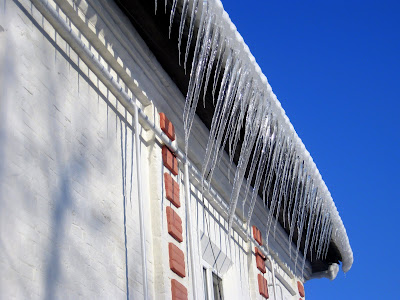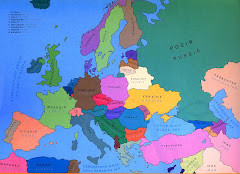

“I really do inhabit a universe in which words are capable of shaking the entire structure of government, where words can prove mightier than ten military divisions."
Vaclav Havel, former president of Czechoslovakia and then president of the independent Czech Republic until 2003.
I was in Prague and so I decided to look for one of my heroes, Vaclac Havel, the brilliant, talented poet and former president of the Czech Republic. He stepped down in 2003 and has since returned to theatre, teaching, international relations, and writing. He is one of the people in this world, along with the likes of Jefferson, Susan B. Anthony and Elizabeth Cady Stanton, with whom I’d love to have dinner. I’d ask Havel about his life’s work, his passions, his role as a leader of the “velvet revolution’ that peacefully freed the country of Communist occupation. I’d ask him how a poet became a president, how a poet, playwright, and artist became a political activist and an icon of independence. I’d listen to him read his poetry and newest plays over coffee and dessert, savoring every
 moment with this great man.
moment with this great man.Prague, the Czech capital, is an incredibly beautiful city, I think one of the most beautiful I have ever seen. How wonderful it must have been, how enriching and inspiring, to grow up here. My search for Havel began with a night cruise down the historic Vltava river. It was our group’s introduction to the city, led by experienced guide Bella, who lives in Prague and speaks fluent Russian. She knows the city like the back of her hand. She pointed out the sights along the river as we passed under lovely bridges, including the Charles, the oldest in Europe. As night fell and over a hearty dinner with some great Czech beer, she gave us some history, talked a little about Havel and the revolution he helped lead. Havel wasn’t on the boat, but his presence was felt.
After the cruise, Bella led us on a walking tour of the city. As tired as we were, after a 27-hour bus trip from Lviv that included a 7-hour wait at the Ukraine-Poland border, it was a wonderful walk, like a luscious dessert topping off a grand five-course dinner. Our group of 30 diverse people, many from Kyiv where the tour started, turned out to be such enthusiastic tourists it was contagious! We walked through squares, between buildings, under elaborate archways, around grand churches, cultural centers and towers, and stopped for closer looks at many, including the Maisel Synagogue, a fanciful pure white building that shines like a beacon in the night. Kind of unusual architecture for a Synagogue I thought, but, then, we are in Prague, and everything imaginable is possible.
There’s something about seeing a city for the first time at night that is wondrous: all the sites are lit up like a gigantic Christmas tree of many colored lights, decorated with the most elegant arts and crafts, Bohemian crystal in every shape and color, elaborately carved, painted and enchanting decorations. It reminded me of the antique Christmas bulbs that belonged to my grandmother and to her mother and my mother, which we get out every year to adorn our trees, but multiplied a thousand-fold over a magic fairytale land of one’s dreams. It’s dazzling.
But it was getting late, and I think Havel was either relaxing in his beautiful home in Wenseslas square, or listening to jazz at one of his favorite jazz cafes. When Havel invited Bill Clinton to Prague, they attended one such café, and Bill took a turn on a sax! What a team! Our group, however, as enthusiastic as it remained, was ready to call it a day. I would look for Havel tomorrow.
During the day, Prague is even more stunning, because you can see all the details of the magnificent architecture that defines the city. I think Havel must know them intimately; they inspired his poetry and his patriotism.
During the day, Prague is even more stunning, because you can see all the details of the magnificent architecture that defines the city. I think Havel must know them intimately; they inspired his poetry and his patriotism.
The city is packed with palaces and churches, ornate gates and towers, theaters and cultural centers, sacred and secular monuments and statuary in a range of gorgeous architectural styles from the Medieval to the Renaissance, Baroque and Gothic and up through 18th and 19th-century classics. Havel no doubt inhabited or visited them all at one time or another: the humanist and artist who used words not weapons to bring a revolution. I was in his footsteps.
I realized it didn't matter where we were, Havel's spirit was there. Surely he worshipped at times at the glorious St. Vitus Cathedral, part of the Prague Palace and Monestary complex, on a hilltop overlooking the whole city. His family once lived nearby, an intellectual and upper class family. The Cathedral was built over several centuries, not years but centuries, so it contains all of the different styles and elements that are part of prague’s architectural heritage. It features lovely slender Gothic towers, distinctive on the Prague skyline, along with incredible Neo-Gothic and Art Nouveau stained glass windows. The nave rises into the heavens, it’s that high. The spirit of Havel hovers. I could see how such beauty and artistry would inspire a revolution.
Just as important as the magnificent and monumental palaces and cathedrals are the lovely and lively town squares: Wensaslas Square (Vaclavske namesti), Old Town Square and Lesser Town Square, centers of commercial and cultural activities, where people gather and where Czech partisans in 1968, and later in the late 1980s, held organizing meetings and public protests. Havel’s motto then, during those revolutionary days, was “Truth and love must replace lies and hate.” I could imagine him stirring up a crowd, surrounded by the stunning beauty of a Prague square, with these words.
I realized it didn't matter where we were, Havel's spirit was there. Surely he worshipped at times at the glorious St. Vitus Cathedral, part of the Prague Palace and Monestary complex, on a hilltop overlooking the whole city. His family once lived nearby, an intellectual and upper class family. The Cathedral was built over several centuries, not years but centuries, so it contains all of the different styles and elements that are part of prague’s architectural heritage. It features lovely slender Gothic towers, distinctive on the Prague skyline, along with incredible Neo-Gothic and Art Nouveau stained glass windows. The nave rises into the heavens, it’s that high. The spirit of Havel hovers. I could see how such beauty and artistry would inspire a revolution.
Just as important as the magnificent and monumental palaces and cathedrals are the lovely and lively town squares: Wensaslas Square (Vaclavske namesti), Old Town Square and Lesser Town Square, centers of commercial and cultural activities, where people gather and where Czech partisans in 1968, and later in the late 1980s, held organizing meetings and public protests. Havel’s motto then, during those revolutionary days, was “Truth and love must replace lies and hate.” I could imagine him stirring up a crowd, surrounded by the stunning beauty of a Prague square, with these words.
The walk down from the hilltop to the squares, on winding cobble-stoned streets lined with the former homes of merchants and craftsmen, is a feast in itself. You get both beautiful panoramic vistas of the city, and close-up views of the beautiful details of every building. You get a sense of the prosperous and proud city of the past, and the free city of the present. Havel’s family, I learned, was very much a part of this culture in this place. Havel absorbed it all, from an early age, a proud Czech with an artistic vision and a world view.
The details of Prague architecture fuse into an elaborate mosaic of red and brown roofs with white and pink chimneys, interwoven with green, yellow, rose, lavender, ochre and colorfully painted facades, decorated with pastel paintings, bas relief, decorated doors and windows above which are lovely house signs. Bella explained that these signs are not only artful decorative items, but also tell of the original owners' occupations. Thus there are signs featuring musical instruments (we saw one with three violines, very lovely), knights on horses, swans and birds, fabric and metal objects, fruits and vegetables, each designating a profession or trade, or perhaps a special interest.
Among these beautiful houses is the Storch House in Old Town Square, built in the late 19th century on the site of a Gothic building. The walls are covered with frescoes and colorful decorations, called I learned afterwards, “sgraffito” decorations, the origin of what we today call “grafitti” on our urban buildings. A knight on a white horse painted boldly on the Storch House turned out to be St. Wenceslas, the patron saint of the Czech state.
The Old Town Square (Staromestaske namest) also features a fantastical (if there is such an adventive) Astronomical Clock. Every hour, moving figures, the apostles, appear in the upper windows, marching around the tower, along with the toll of bells and the sound of a live trumpet filling the square with majestic sound. The crowd applauds, and the trumpeter, in regal red dress, bows. We are enchanted!
We wonder off toward a grand church with a distinctive large green cupola that draws us to it like a magnet. What is this magnificent Baroque structure that dominates the Square? It's St. Nicholas Church, and it’s interior is as elegant as its exterior, full of amazing paintings and statues, lovely stained glass windows, and a beautiful ceiling fresco above an elaborate Nave. Popes spoke here, to throngs of worshipers, Havel among them. I'm not sure what Havel's religious beliefs are, but under his spiritual side lies a free spirit who loves Frank Zappa and Smashing Pumpkins and other alternative forms of music and art. At the same time, I can picture him worshipping at one of these grand churches, or enjoying a Mozart concert in the Smetana auditorium of the beautiful Art Nouveau Cultural hall or at Philharmonic Hall, a massive Renaissance building.
There is one building in Prague which is among Olga's favorites and which she said she must see again. Would we go with her? Yes, of course. We walked along the river, along a grand boulevard, to a funny-looking building that looked as if it was swaying in the breeze. "This is it," Olga exclaimed, jumping 3 feet into the air! "It's the Dancing Building!"
So this gray "leaning-tower-of-Pisa" building wasn't swaying in the breeze, it was dancing! It was happy; it was free. I later read in a guide book that it stood on the site of a building that was bombed in 1945, and that it was designed and built between 1992 and 1996 by an American architect and a Czech architect, working together, combining old and new world styles. The architects: Frank O. Gehry and Vlado Milunic. The same Frank Gehry who designed the Toledo Museum of Art addition and the modern glass building and other buildings of distinction in America.
The Dancing Building seemed such a joyful metaphor for change and hope. It embodied the eclectic spirt of Vaclav Havel, the old and the new, dancing together into a brilliant future.
I didn’t see Havel, but his spirit is everywhere: creativity and political reality fused into a magnificent mosaic composed of the past and present. Havel inhabits Prague's essence. That’s where I found Vaclev Havel, poet-president of the Czech republic.









 Discussions of democratic principles and the Common Good have been thoughtful and fascinating.
Discussions of democratic principles and the Common Good have been thoughtful and fascinating. 






























